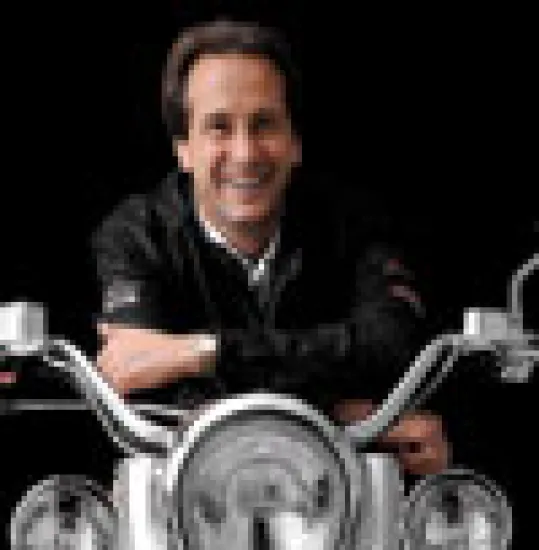When veteran British private equity investor Stephen Julius picked up the bankrupt Indian Motorcycle Co. in a whirlwind three-day bidding process back in 2004, he wasn’t sure what was left of the iconic American brand. Indian’s intellectual property and trademarks, which had landed on the auction block after the previous owners filed for bankruptcy in 2003, would be his — he was fairly certain of that. What was less clear was whether bikers still had any faith in the brand. Even for an experienced investor like Julius, founder of London-based distressed-investment firm Stellican, buying Indian was a wild ride.
“It was 2:00 a.m. on a Friday night when I found out that I’d won the bid,” recalls Julius. “I was sitting in my house in London, thinking, ‘Christ, what do I own? I know I don’t have the money anymore, but what exactly do I own?’”
Julius had just spent a big chunk of cash (he’s tight-lipped about specifics) in the hopes of fusing his passion for resurrecting vintage brands with his talent for investing. “Motorcycles are complex objects, and this is a business in which fortunes have been made and lost,” he says. “But Indian is a wonderful, authentic, aspirational American heritage brand. Brands don’t develop those qualities overnight; they build up over decades.”
The trademarks were now his, but little else remained of Indian Motorcycle, save two trailers full of documents from the bankrupt company’s headquarters in California. It was just the kind of challenge Julius and his Stellican partner, Stephen Heese, couldn’t resist.
In the past five years, Julius and Heese have spent $35 million painstakingly rebuilding the first and arguably most famous brand in the history of the American motorcycle industry. First, they recruited some of the industry’s top designers and engineers. Then they built a production factory in Kings Mountain, North Carolina, to produce the new bikes. In December 2008, Indian rolled out its first 400 motorcycles from the new plant, and in July the company introduced its new 2010 lineup, which includes a limited-edition Indian Chief Bomber, inspired by World War II aircraft (featuring pinup-girl artwork on the gas tank).
Knowing that Indian’s previous owners had lost customers’ confidence by selling poorly designed motorcycles with defective parts, Julius decided early on that the new company would take total responsibility for the motorcycle’s engineering — from its chromed, teardrop-shaped halogen headlamp to its gleaming, 105-cubic-inch (1720 cc) V-Twin engine. As with his method of analyzing a company before making an investment, he focused on every detail, from the manufacturing process to the custom-designed key fob.
Such passionate attention to detail doesn’t come cheap. The company’s entry-level motorcycle, the Indian Chief Classic, starts at a hefty $25,999; the high-end Indian Chief Vintage sells for $35,499. Indian aims to reach annual sales of 6,000 motorcycles in five years. Julius and Heese, as chairman and president, respectively, hope to meet that goal through strong ties with dealerships and another cash injection; they recently appointed U.S. investment banking firm Robert W. Baird & Co. to help raise an extra $14 million.
Julius, 49, believes that buyers will succumb to the same passion that drove him to resuscitate the company. “When you bring back a heritage brand like this and actually start doing the right thing — which means making a beautiful product that fulfills the promise of the name — then goodwill starts flooding back very quickly,” notes Julius.
Indian isn’t the first rescue for Julius, who has an undergraduate degree in classics from Magdalen College, University of Oxford, and an MBA from Harvard Business School. In 1998, Stellican purchased ailing but renowned Italian yacht maker Riva; two years later it sold the company to luxury yacht maker Ferretti Group. Then, in 2001, Stellican bought U.S. speedboat company Chris-Craft out of the bankruptcy proceedings of its parent company, Outboard Marine Corp., and restored its luster.
For Julius, who can be seen piloting his cherry-red-and-cream Indian Chief Vintage through the streets of London, the entrepreneurial thrill of breathing new life into a vintage brand is worth the hassle of reviving the manufacturing process — which makes him, as he wryly observes, “the only guy amongst all my friends in finance who actually manufactures anything.”






